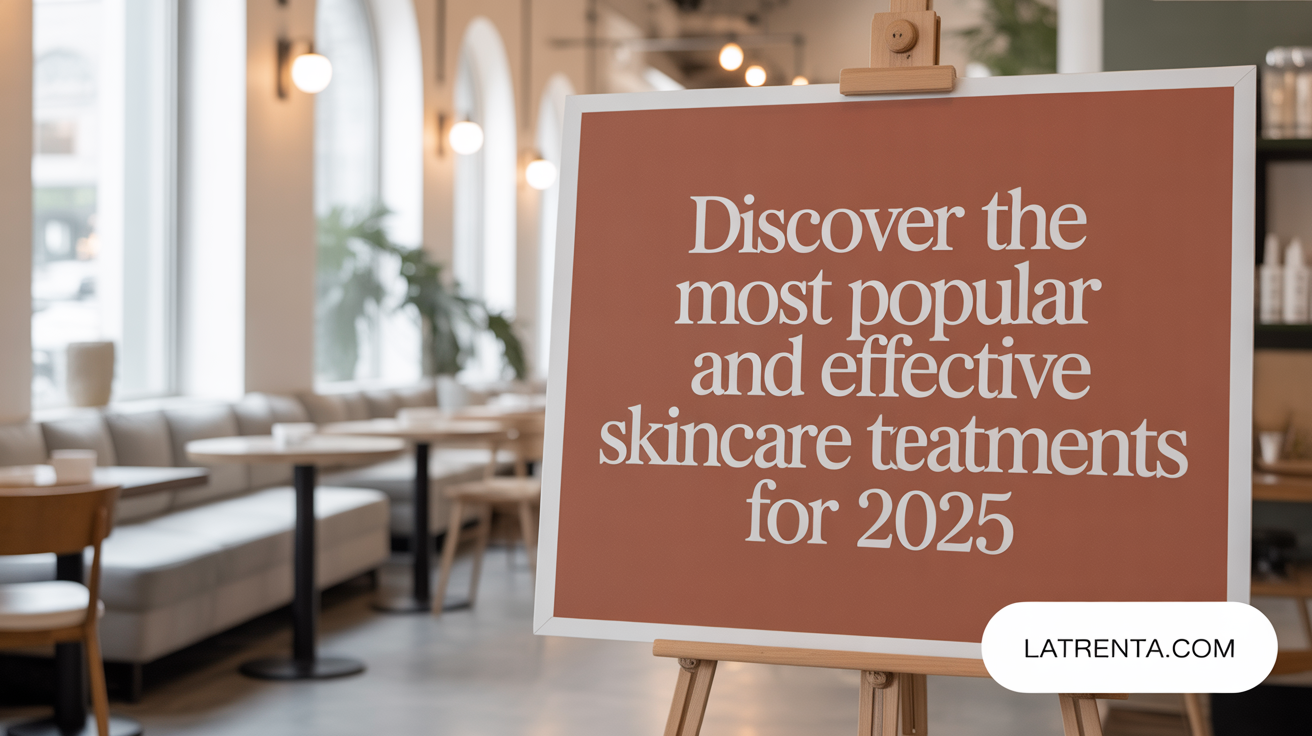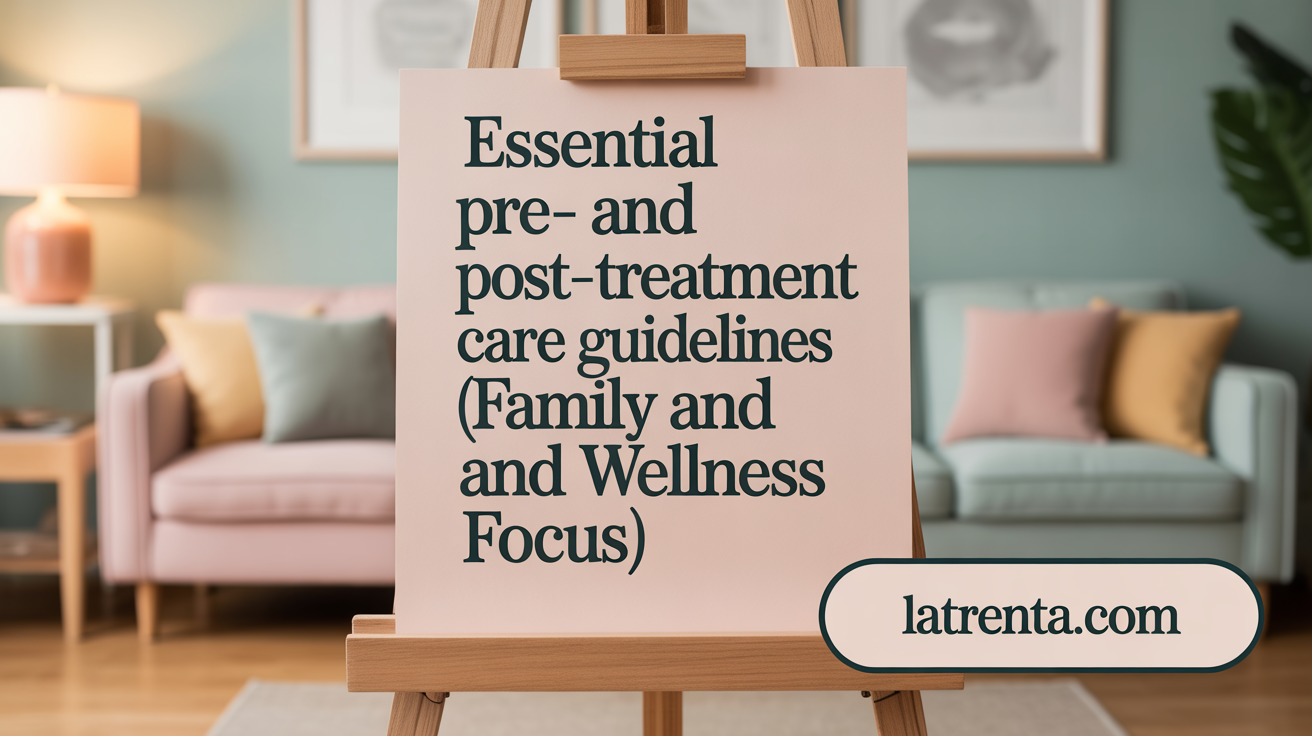Invest Wisely in Lasting Beauty
In the rapidly evolving field of aesthetic medicine, non-invasive treatments have emerged as a cornerstone for individuals and practices seeking effective, low-risk enhancements. From injectables and laser therapies to cutting-edge skin tightening technologies, these procedures offer promising results with minimal downtime. Yet, maximizing the value of your investment—whether as a patient or practitioner—requires a strategic approach that encompasses treatment selection, preparation, aftercare, technology investment, and ongoing education. This article explores essential strategies designed to optimize outcomes, sustain long-term benefits, and boost profitability within the non-invasive aesthetic landscape.
Understanding Non-Invasive Aesthetic Techniques: Foundations for Smart Investment

What are non-invasive aesthetic techniques?
Non-invasive aesthetic techniques refer to cosmetic procedures that do not require surgical cuts or incisions. These methods aim to improve appearance with minimal risk, discomfort, and downtime. They are designed to address common concerns such as wrinkles, skin laxity, pigmentation, and uneven skin texture.
Popular modalities include ultrasound therapy, radiofrequency skin tightening, chemical peels, microdermabrasion, and various laser treatments. Each utilizes advanced technology to stimulate collagen production, remove damaged layers, or refine skin surface. The procedures are favored for their convenience—they often require no anesthesia and allow patients to resume daily activities immediately.
The rise of these treatments is driven by ongoing technological innovations that enhance their safety, effectiveness, and accessibility. As the industry shifts towards minimally invasive options, aesthetic clinics are increasingly adopting these methods to meet patient demand.
Emerging innovations such as bioprinting and waterless devices demonstrate how non-invasive techniques are evolving. These advancements promise even more precise, comfortable, and natural results. Overall, non-invasive aesthetic procedures are shaping the future of cosmetic care by offering effective, low-risk solutions aligned with modern patient preferences.
The Leading Aesthetic Treatments of 2025: Popularity Meets Effectiveness

Which aesthetic treatments are considered the most popular and effective in 2025?
In 2025, the aesthetic treatment landscape continues to evolve with a focus on minimally invasive procedures that deliver natural, long-lasting results. Exosome skin rejuvenation has become a top choice due to its regenerative properties, stimulating collagen and improving skin texture. RF microneedling devices like Morpheus8 combine radiofrequency energy with microneedling to tighten and smooth skin effectively.
Facial refinement remains popular with Baby Botox, which offers subtle muscle relaxation to reduce wrinkles without compromising facial expressions. Dermal fillers, including hyaluronic acid-based products, are widely used for contouring, lip enhancement, and volume restoration.
Non-surgical face lift options, such as Ultherapy, high-intensity focused ultrasound (HIFU), and PDO thread lifts, continue to attract clients looking for facial lifting without downtime.
Skin resurfacing treatments like laser ablation and advanced chemical peels also rank high for improving skin tone, reducing scars, and tackling pigmentation problems. These procedures are celebrated for their ability to rejuvenate skin texture and radiance.
What innovations are driving treatment adoption?
Technological advancements play a vital role in expanding treatment options. Innovations in laser and radiofrequency devices now offer more precise, comfortable, and effective results. AI-driven skin analysis helps customize treatments for individual needs, boosting efficacy.
New device features such as water-cooled RF systems improve patient comfort and safety, making these procedures accessible to broader skin types. Additionally, combining treatments—like chemical peels post-laser therapy—maximizes outcomes.
Why do patient preferences favor minimally invasive options?
Today’s clients prioritize quick recovery, minimal discomfort, and natural-looking results. As a result, non-invasive procedures like Botox, dermal fillers, and RF microneedling continue to dominate the market.
These treatments often require no anesthesia, have shorter sessions, and enable patients to resume daily activities immediately. The trend towards preventive aesthetics also influences preferences, with many opting for treatments that delay the need for more invasive surgeries.
| Treatment Type | Popularity Reasons | Typical Cost Range | Expected Results |
|---|---|---|---|
| Exosome skin rejuvenation | Regenerative, improves skin quality | $500-$1,200 per session | Brighter, tighter, more youthful skin |
| Morpheus8 RF microneedling | Skin tightening, texture improvement | $800-$2,000 per session | Smoother, firmer skin |
| Baby Botox | Subtle wrinkle reduction, natural expression preservation | $300-$800 per session | Fresh, relaxed appearance |
| Dermal fillers | Volume restoration, contouring | $500-$1,500 per syringe | Sculpted features, plump lips |
| Ultherapy and HIFU | Non-surgical lifting, skin tightening | $1,500-$3,000 per session | Lifted, firmer skin |
| Laser resurfacing | Texture, pigmentation, scar improvement | $800-$3,000 per session | Clearer, rejuvenated skin |
These treatments reflect a broader shift towards personalized, minimally invasive care that aligns with modern patient expectations for effective, quick, and natural results.
Strategies to Maximize Results and Longevity of Non-Invasive Aesthetic Procedures

What strategies can maximize the benefits and results of non-invasive aesthetic treatments and procedures?
To get the best possible results from non-invasive aesthetic treatments, personalizing care is essential. This includes selecting treatments that match individual skin types, aging concerns, and aesthetic goals. For example, neurotoxins like Botox and Dysport provide quick wrinkle smoothing, while dermal fillers add volume where needed. Advanced technologies such as laser therapy, microneedling with PRP, and skin tightening devices can further enhance skin quality.
Pre-treatment preparation also plays a significant role. Patients should follow provider instructions, including proper skin cleansing, avoiding sun exposure, and applying sunscreen daily. Using medical-grade skincare products, like those from Biologique Recherche, can prepare the skin and support lasting results.
Post-procedure care is equally vital. Gentle cleansing, avoiding harsh scrubs, and staying well-hydrated help the skin heal and maintain improvements. Lifestyle choices, including a balanced diet rich in antioxidants, adequate hydration, and avoiding smoking, support overall skin health and prolong aesthetic benefits.
Combining treatments can lead to more comprehensive outcomes. For invasive concerns, such as mild skin laxity, combining procedures like chemical peels with laser treatments or microneedling can maximize collagen stimulation and skin rejuvenation.
Regular professional maintenance is crucial. Scheduling follow-up visits allows practitioners to assess progress, make necessary adjustments, and suggest additional treatments to keep skin looking youthful and refreshed.
Partnering with experienced clinicians ensures treatments are safe, effective, and tailored to your specific needs. They can design a comprehensive aesthetic plan, incorporating preventive measures and maintenance, which reduces the likelihood of needing more costly interventions later.
In summary, ongoing care—through personalized treatment selection, diligent pre- and post-care routines, healthy lifestyle habits, and professional guidance—is fundamental for sustaining and amplifying the long-term benefits of non-invasive aesthetic procedures.
Best Practices for Preparation, Treatment Execution, and Aftercare

What are the best practices for preparing, executing, and providing post-care to enhance the longevity and effectiveness of non-invasive aesthetic treatments?
Maximizing the benefits of non-invasive aesthetic procedures requires careful attention from start to finish. Effective preparation begins with a thorough consultation with a qualified practitioner who can assess skin type, concerns, and goals. This personalized approach ensures that treatments like Botox, dermal fillers, or laser therapies are suitable and tailored to each patient.
Pre-treatment routines should include following specific skincare guidelines, such as discontinuing certain medications like blood thinners if advised, and using daily sun protection to shield the skin from UV damage. Maintaining good hydration and avoiding aggressive exfoliation or harsh skincare products in the days leading up to treatment can also help optimize outcomes.
During the procedure, adherence to all pre-treatment instructions provided by the clinician ensures safety and effectiveness. Clear communication about the process, expected sensations, and potential side effects helps prepare patients and reduces anxiety.
Post-treatment care is equally critical. Patients should manage common signs of swelling or redness with cold compresses and avoid touching or massaging the treated areas unless instructed. Protecting the skin from sun exposure is paramount; using broad-spectrum sunscreen daily prevents pigmentation changes and supports healing.
Follow-up appointments allow practitioners to monitor progress and make any necessary adjustments, ensuring the best long-term results. Supporting the skin through ongoing skincare routines, including medical-grade products rich in antioxidants and vitamins, maintains skin health and prolongs treatment effects.
Nutrition plays a pivotal role. Consuming a balanced diet rich in vitamin C, omega-3 fatty acids, and zinc aids tissue repair and collagen synthesis, essential for skin rejuvenation. Staying well-hydrated promotes cellular function and healing.
Additionally, adopting a healthy lifestyle—limiting smoking, managing stress, and avoiding excessive alcohol—further enhances healing and sustains aesthetic improvements. When combined, these practices create a comprehensive approach that not only maximizes the efficacy of aesthetic treatments but also supports long-lasting, natural-looking results.
Making Informed Equipment Investments: Choosing and Optimizing Aesthetic Technology
How can practitioners choose, invest in, and optimize aesthetic devices and equipment to achieve a better return on investment?
Selecting the right aesthetic devices requires a thorough market analysis and understanding treatment versatility. Practitioners should evaluate technological innovations like Venus Versa™ or Venus Bliss MAX™, which offer multiple treatment options and appeal to diverse client needs. Devices with proven clinical benefits and high safety profiles tend to attract more clients, leading to sustained revenues.
Initial costs are just one part of the equation; operational expenses—including disposables, maintenance, and staff training—also influence overall profitability. Estimating treatment volume and device lifespan helps predict depreciation and return timelines. Prioritizing devices known for durability and ease of use can minimize downtime and service disruptions.
Marketing strategies such as value-based pricing, treatment bundles, and targeted promotions can enhance treatment uptake. Equally important is staff education — empowering your team with proper training increases treatment quality and client satisfaction.
Regular monitoring and maintenance ensure devices operate at peak performance. Staying updated with software upgrades and technological advancements prolongs device relevance and efficiency.
By combining careful device selection, smart operational planning, and effective marketing, practitioners can optimize ROI significantly. A strategic, data-driven approach to equipment investments helps build a sustainable, profitable aesthetic practice.
Current Market Insights, Trends, and Growth Forecasts Shaping Investment Decisions

What are the current industry insights, trends, and forecasts that should inform investment decisions in non-invasive aesthetic technology?
The field of non-invasive aesthetic treatments is rapidly expanding, with the industry expected to reach nearly $95 billion by 2032, growing at an approximate compound annual growth rate (CAGR) of 13%. This impressive growth is driven by ongoing technological innovations like AI-guided devices, energy-based systems such as radiofrequency (RF), laser, and ultrasound technologies, and hybrid treatment platforms that combine multiple mechanisms to improve safety and outcomes.
Market trends show a marked increase in consumer preference for minimally invasive procedures that require little to no downtime. Popular treatments like Botox, dermal fillers, microneedling with PRP, and advanced laser therapies continue to dominate. Personalization of treatment plans, enabled by AI skin analysis tools, helps practitioners deliver tailored solutions, further boosting client satisfaction.
The expansion of medical spa channels and the rise of medspa franchises contribute significantly to the industry’s growth. Consumers are becoming more comfortable with these settings, appreciating the convenience and natural-looking results they offer.
Regionally, North America remains the industry leader due to high consumer awareness, technological adoption, and innovative practitioner practices. However, Asia-Pacific is forecasted to experience the fastest growth, driven by increasing disposable incomes, shifting social norms, and expanding awareness of aesthetic treatments.
Despite this positive outlook, challenges such as evolving reimbursement policies, stricter regulations, and economic fluctuations can influence growth trajectories. Nonetheless, continuous innovation and a strong consumer demand signal ongoing opportunities. Investors should pay close attention to emerging technologies, market demographics, and regulatory landscapes to make informed decisions in this dynamic sector.
In conclusion, the industry’s resilience and rapid technological progression create an attractive landscape for investment, with substantial growth potential spurred by consumer preferences and global technological advancements.
Expanding Aesthetic Practice Offerings to Boost Profitability and Competitive Edge

Which approaches can aesthetic practices use to expand or enhance their service offerings to improve profitability and competitiveness?
Aesthetic practices seeking growth can adopt several effective strategies to broaden their service portfolio. One primary approach is integrating a variety of minimally invasive and non-invasive treatments that are trending in the market. These include skin rejuvenation procedures, advanced injectables like Botox and dermal fillers, and body contouring options such as CoolSculpting and Emsculpt. Offering these popular services aligns with current consumer preferences for quick, effective results with minimal downtime.
Investing in cutting-edge technology is another vital tactic. Devices with multi-application capabilities, such as radiofrequency (RF) systems and laser platforms, not only enhance treatment options but also ensure better ROI. For example, RF microneedling and fractional laser systems can address multiple concerns—tightening, texture, pigmentation—using a single platform, which increases operational efficiency.
Marketing plays a crucial role in driving growth. Developing a strong digital presence through Search Engine Optimization (SEO), social media campaigns, and collaborations with influencers helps attract new clients. Engaging content showcasing before-and-after results, client testimonials, and offers encourages new patient acquisition and builds trust.
Retention strategies such as loyalty programs, personalized treatment plans, and regular follow-up consultations foster long-term client relationships. These tactics encourage repeat visits and increase lifetime value.
Strategic partnerships with wellness clinics, cosmetic surgeons, dermatologists, and industry suppliers can create new revenue avenues. Collaborations enable the practice to offer comprehensive aesthetic solutions, attract a broader clientele, and share marketing resources.
Finally, diversifying services through aesthetic medicine and advanced training can elevate a practice's profile. Educating staff with certifications in the latest treatments not only broadens treatment capabilities but also attracts a wider patient base seeking specialized procedures. This comprehensive approach ensures a practice remains competitive and profitable in a rapidly evolving industry.
Optimizing Practice Operations: Financial Planning, Training, and Marketing Strategies
What methods can be employed for effective planning, budgeting, and financing of aesthetic treatments and equipment investments?
Successful aesthetic practices start with thorough financial planning. This involves creating detailed budgets that include all costs—from initial equipment purchase to ongoing maintenance and staffing. Estimating treatment complexity and frequency helps predict revenues, while considering costs like disposables and staff time ensures comprehensive expense management.
Diversifying income streams, such as product retail sales, memberships, or bundled treatment packages, can enhance financial stability. Negotiating with suppliers and exploring financing options, including loans or leasing, improve affordability of expensive equipment.
Regularly monitoring Key Performance Indicators (KPIs) like treatment numbers, profitability per treatment, and inventory levels supports strategic adjustments. Consulting with financial professionals and using reliable software tools facilitate informed decisions. Long-term financial health depends on balancing investment costs with expected treatment volume and revenue growth.
What education and training strategies optimize practitioner skills and improve treatment outcomes in non-invasive aesthetics?
High-quality education and training underpin safe, effective treatments. Practitioners should pursue accredited courses that cover facial anatomy, injection techniques, and complication management. Hands-on training—whether virtual or in-clinic—builds confidence and skill.
Continual learning through Regular CME courses is vital to stay updated on technological advances and safety standards. Implementing certification schemes and strict licensing requirements ensures a competency standard across providers.
Moreover, emphasizing diversity, cultural competence, and patient-centered communication enhances practitioners’ ability to deliver responsible care tailored to different population needs. This ongoing education investment improves outcomes, builds credibility, and minimizes risks.
What marketing and operational strategies can increase revenue, client satisfaction, and growth in non-invasive aesthetic practices?
Effective marketing combines digital and community outreach. Search Engine Optimization (SEO), targeted social media campaigns, and Pay-Per-Click (PPC) advertising attract targeted audiences online.
Offering personalized consultations, loyalty programs, referral incentives, and flexible treatment packages keeps clients engaged and encourages repeat visits. Educational content sharing builds trust, while open-house events showcase treatments and facilities.
Expanding service menus with innovative technologies—like laser therapies or microneedling—provides competitive advantages. Strong branding, consistent online presence, and listening to patient feedback support positive reputation building.
Operationally, optimizing scheduling, managing inventories efficiently, and training staff in customer service enhance satisfaction. Regular review of practice performance metrics ensures sustainable growth and profitability. Balancing surgical and non-surgical offerings creates a diversified, resilient business model.
| Strategy Area | Key Actions | Impact |
|---|---|---|
| Financial Planning & Budgeting | Detailed budgets, revenue diversification, supplier negotiations, financial monitoring | Long-term sustainability, profitability |
| Practitioner Training | Accredited courses, hands-on practice, CME, cultural competence | Improved safety, treatment quality, safety |
| Marketing & Operations | Digital marketing, patient loyalty programs, expanding treatments, strong branding | Increased client base, higher revenue, enhanced satisfaction |
| Overall | Continuous performance review, staff training, patient engagement | Growth, reputation, and operational efficiency |
By integrating sound financial strategies, ongoing practitioner education, and targeted marketing efforts, aesthetic practices can boost their growth, improve patient outcomes, and provide a sustainable future.
Realizing Maximum Value from Your Non-Invasive Aesthetic Investment
Maximizing your investment in non-invasive aesthetic treatments involves a comprehensive approach that integrates smart treatment selection, diligent care routines, informed technology acquisition, and continuous practitioner development. Staying abreast of market trends and patient preferences empowers both providers and clients to make choices that favor lasting results and financial efficiency. By embracing a holistic strategy—from preparation through aftercare, alongside robust operational and marketing practices—aesthetic practices can enhance profitability and patient satisfaction simultaneously. Ultimately, investing wisely in education, technology, and personalized care not only elevates outcomes but also secures sustainable growth in the flourishing aesthetic industry.
References
- Maximizing Your Aesthetic Investment: Tips for Long-Lasting Results
- Unlocking the Full Potential of Your Aesthetic Investment
- The Most Profitable Aesthetic Treatments to Offer in 2025
- The Rise of Non-Invasive Skin Tightening: Meeting Patient Demand ...
- The Best Ways To Invest In Your Face According To Facial Plastic ...
- Maximize Your Aesthetic Training Benefits Today | AAAMS
- How to maximise your ROI - Aesthetic Medical Practitioner
- Achieve Your Best Look with Non-Surgical Treatments | San Antonio
